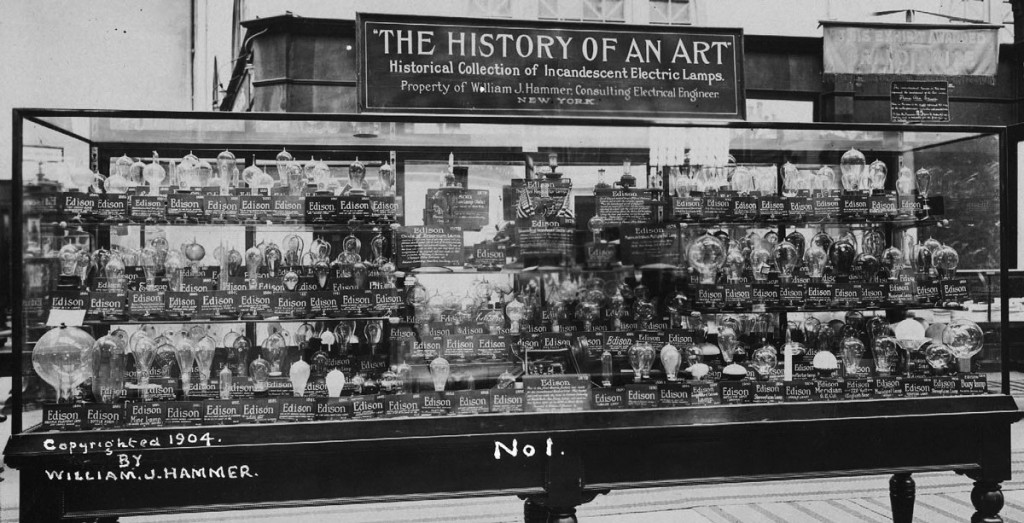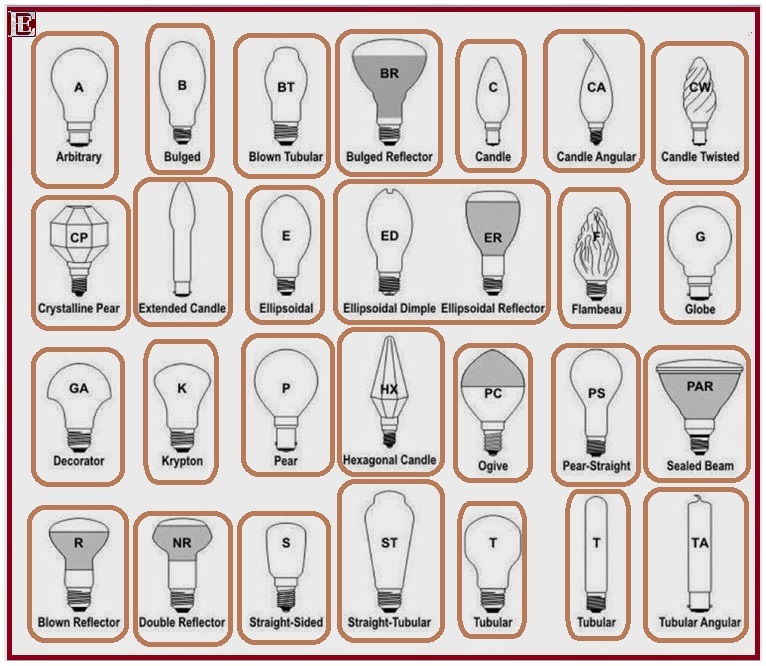
Thomas Edison is usually credited with the invention of the light bulb, but the famous American inventor was not the only on e who contributed to the development of this revolutionary technology. Many notable figures are also remembered for their work with electric batteries, lamps and the creation of the first incandescent bulbs.
Early Research & Developments
The story of the light bulb begins long before Edison patented the first commercially successful bulb in 1879.
In 1800, Italian inventor a developed the first practical method of generating electricity, the voltaic pile. Made of alternating discs of zinc and copper – interspersed with layers of cardboard soaked in the salt water – the pile conducted electricity when a copper wire was connected at either end.

Voltaic pile
While actually a predecessor of the modern battery, Volta’s glowing copper wire is also considered to be one of the earliest manifestations of incandescent lighting.
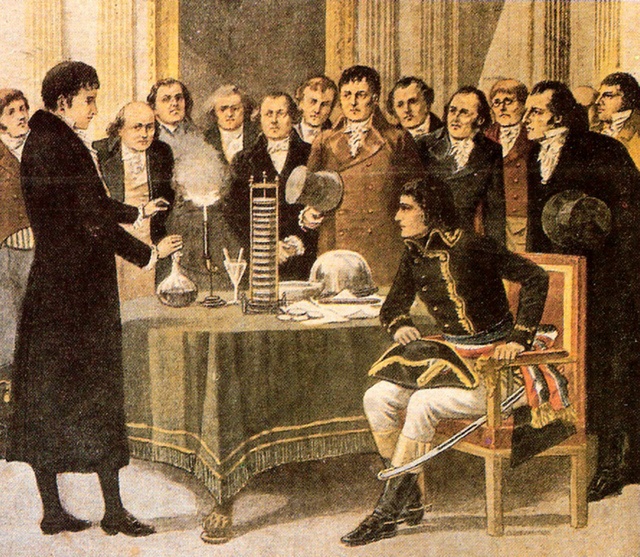
Alessandro Volta Showing His Invention
Not long after Volta presented his discovery of a continuous source of electricity to the Royal Society in London, and English inventor named Humphrey Davy produced the world’s first electric lamp by connecting voltaic piles to charcoal electrodes. Davy’s 1802 invention was known as an electric arc lamp, name for the bright arc of light emitted between its two carbon rods.
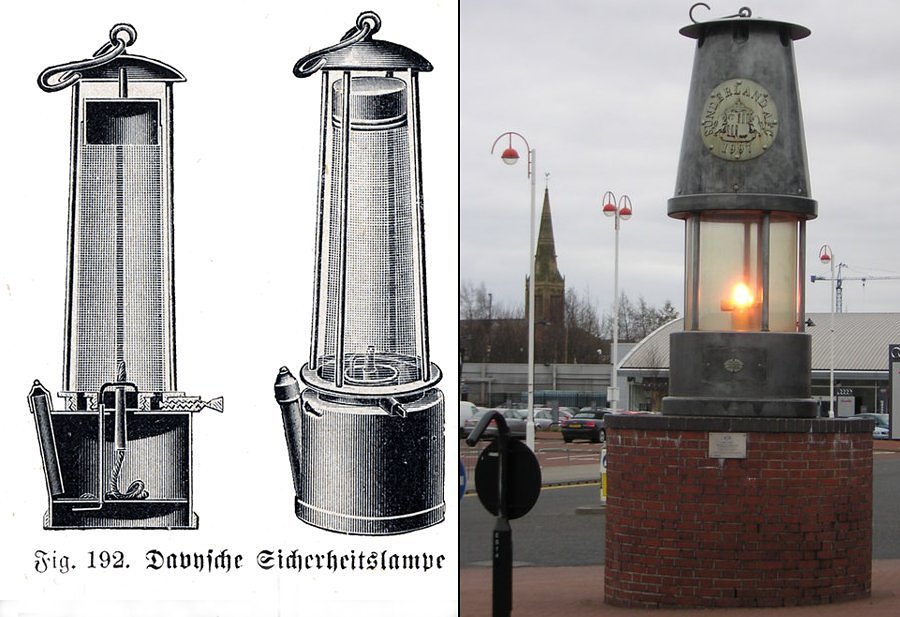
Davy’s Lamp
While Davy’s arc lamp was certainly an improvement on Volta’s stand alone piles, it still was not a very practical source of lighting. This rudimentary lam[p burned out quickly and was much too bright for use in a home or work space. But the principles behind Davy’s arc light were used throughout the 1800 in the development of many other electric lamps and bulbs.
In 1840, British scientist Warren de la Rue developed an efficiently designed light bulb using a coiled platinum filament in place of copper, but the high cost of platinum kept the bulb from becoming a commercial success.
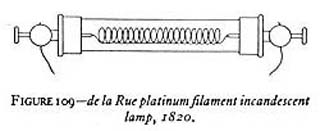
Warren De La Rue Light Bulb
And in 1848, Englishman William Statite improved the longevity of conventional arc lamps by developing a clockwork mechanism that regulated the movement of the lamps’ quick-to-erode carbon rods. But the cost of the batteries used to power Staite’s lamps put a damper on the inventor’s commercial ventures.
Joseph Swan
In 1850, English chemist Joseph Swan solved the cost-effectiveness problem of previous inventors by developing a light bulb that used carbonized paper filament in place of ones made of platinum. Like earlier renditions of the light bulb, Swan’s filament were placed in a vacuum tube to minimize their exposure to oxygen, extending their lifespan. Unfortunately for Swan, the vacuum pumps of his day were not efficient as they are now, and his first prototype for a cost-effective bulb never went to market.
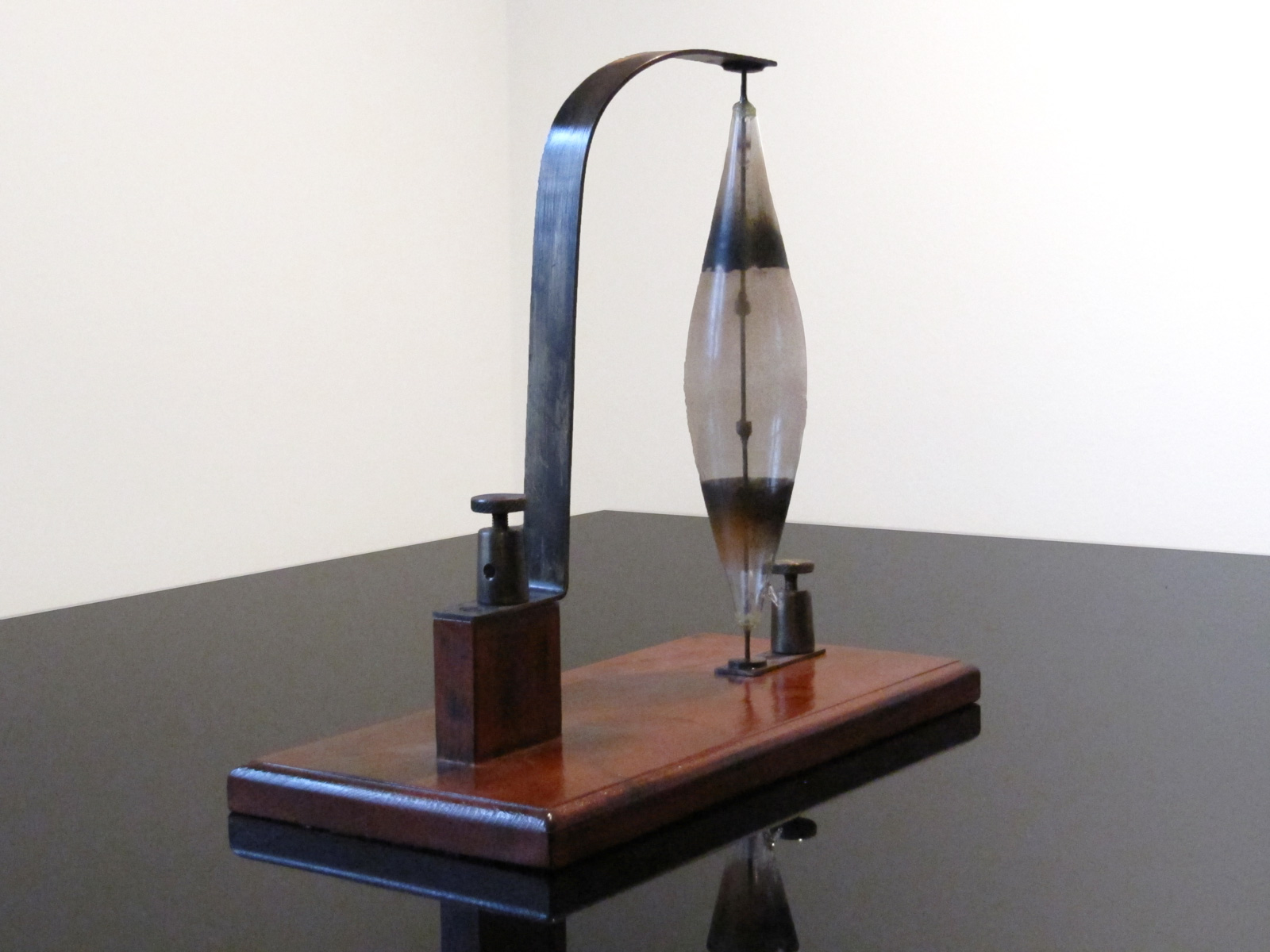
Joseph Wilson Swan’s Lamp
While Swan waited for the development of quality vacuum pumps, an American inventor Charles Francis Brush, was busy developing an electric arc lighting system that would eventually be adopted throughout the United States and Europe during the 1880s. While not truly a light bulb, Brush’s lighting systems could be used wherever bright lights were needed – such as in streetlights and inside commercial building. To power his systems, Brush developed dynamos – or electric generators – similar to those used that would one day be used to power Edison’s electric lamps.
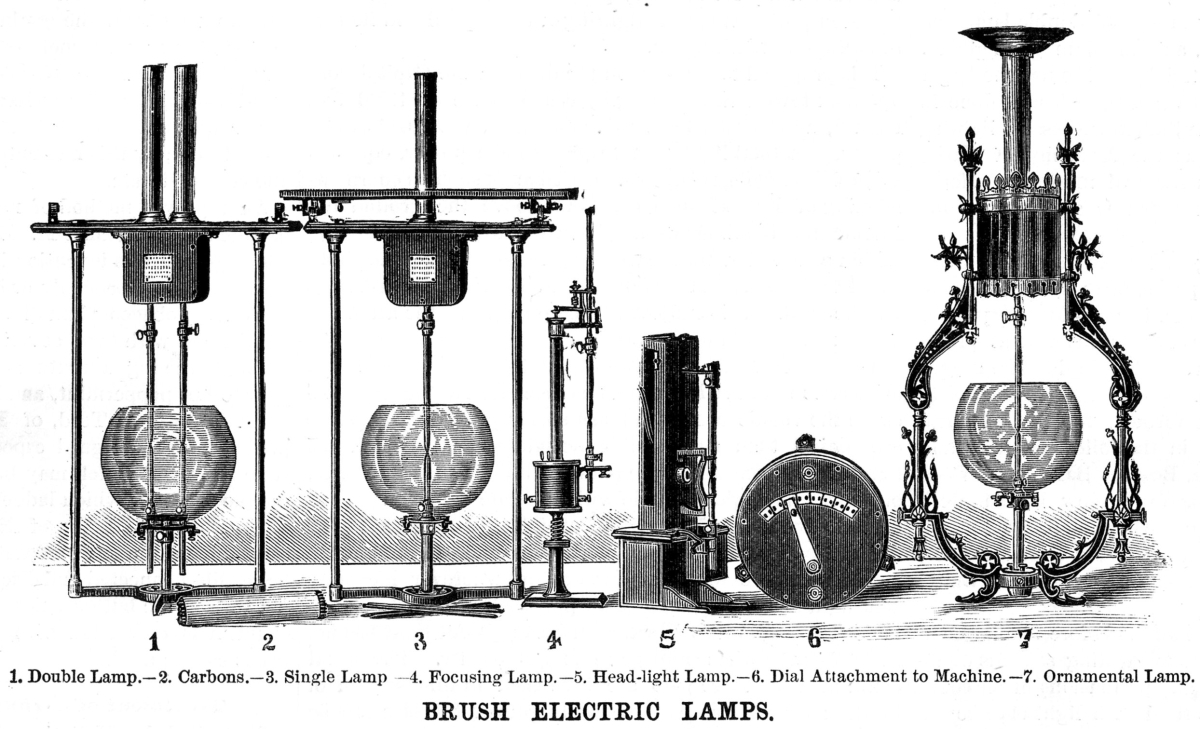
Charles Francis Brush Lamps System
In 1874, Canadian inventor Henry Woodward and Mathew Evans filed a patent for electric lamp with different-sized carbon rods held between electrodes in a glass cylinder filled with nitrogen. The pair tried, unsuccessful, to commericialize their lamps but eventually sold their patent to 1879.
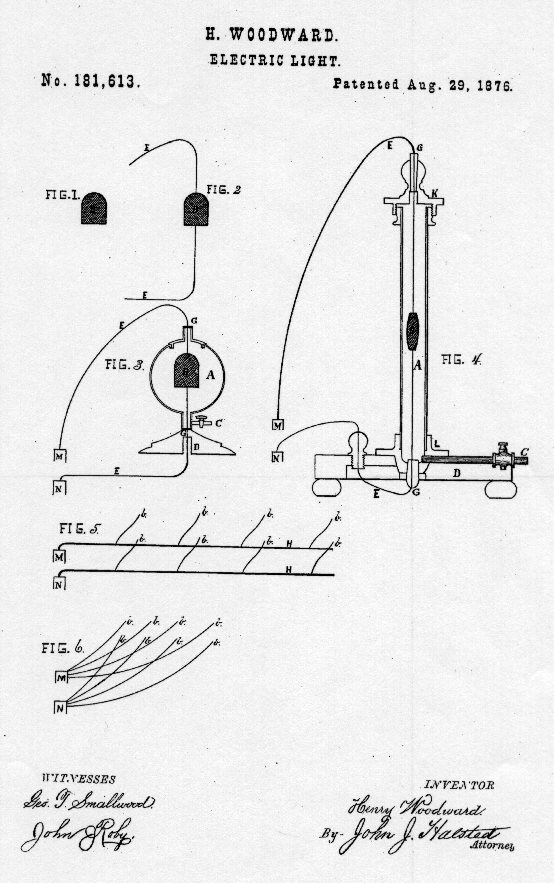
Henry Woodward & Mathew Evans Lamp
The First Practical Incandescent Light Bulb Born
Edison and his team of researchers in Edison’s laboratory in Menlo Park, N.J., tested more than 3000 designs for bulb between 1878 and 1880.
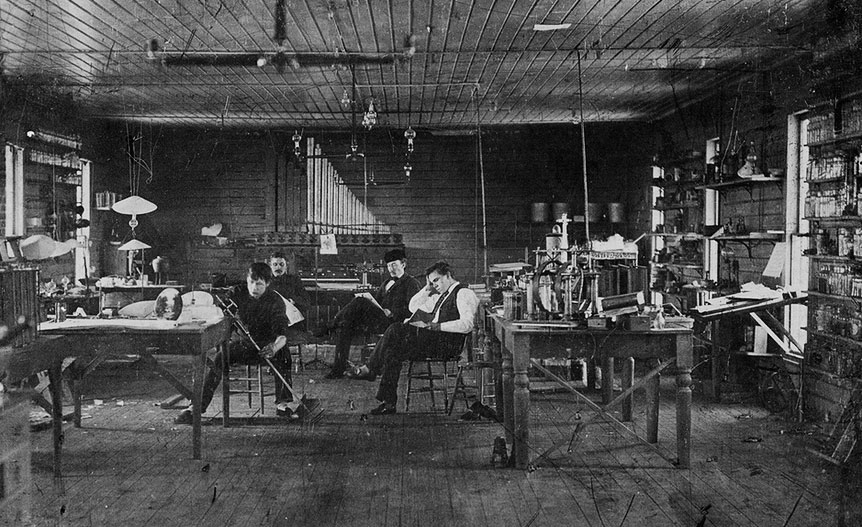
Edison’s Laboratory In Menlo Park
In November 1879, Edison filed a patent for an electric lamp with a carbon filament. The patent listed several materials that might be used for filament, including cotton, linen and wood. Edison spent the next year finding the perfect filament for his new bulb, testing more than 6000 plants to determine which material would burn the longest.
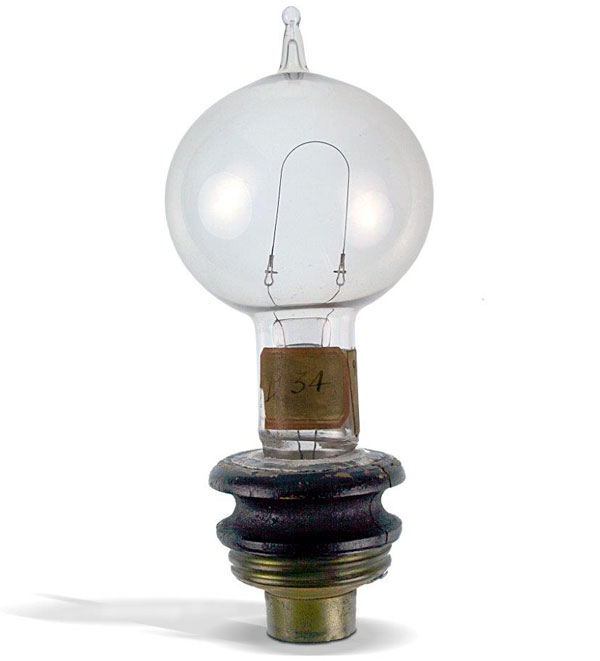
Edison’s Original Screw-Base Prototype
Several months after the 1879 patent was granted, Edison and his team discovered the a carbonized bamboo filament could burn for more than 1200 hours. Bamboo was used for the filaments in Edison’s bulbs until began to be replaced by longer-lasting materials in the 1880 s and early 1900s.
In the 1890s, the three most prominent bulb bases were made by, from left, Edison, Thomson-Houston, and Westinghouse.
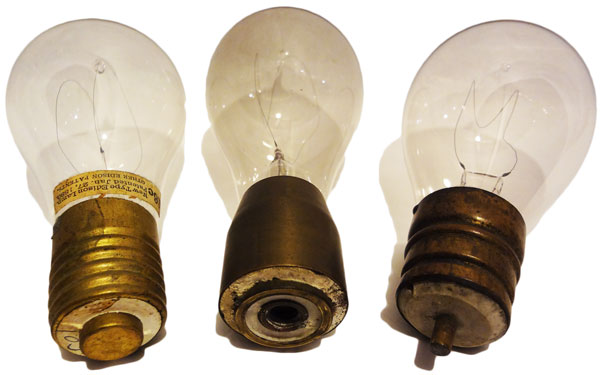
Different Company Light Bulb
1882, Lewis Howard Latimer, one of Edison’s researchers, patented a more efficient way of manufacturing carbon filaments that allowed them to burn bright without darkening the insides of their glass bulbs.
Tungsten Filaments
William David Coolidge, an American physicist with General Electric, improved the company’s method of manufacturing tungsten filaments in 1910. Tungsten, which has the highest melting point of any chemical element, was known by Edison to be an excellent material for light bulb filaments, but the machinery needed to produce super-fine tungsten wire was not available in the late 19 century. Tungsten is still the primary material used in incandescent bulb filament today.
The success of Edison’s light bulb was followed by the founding of the Edison Electric Illuminating Company of New York in 1880. The company was started with financial contributions from J.P.Morgan and other wealthy investors of the time. The company constructed the first electrical generating station that would power electrical system and newly patented bulbs. The first generating station was opened in September 1882 on Peral Street in lower Manhattan.
State Of Art Technology
Now, lighting choices have expanded and people can choose different types of light bulb, including CFL, LED, OLED. Recently LED Lighting was deem as a good thing which fight against Global Warming.
It seems that we are going to say goodbye to the filament light bulb. No one in the 100 years ago can image this, 100 years later, LED lighting may be obsolete. We only can see filament light bulb in the museum.
